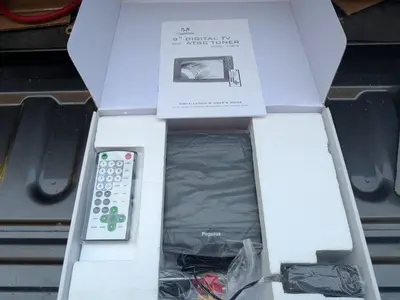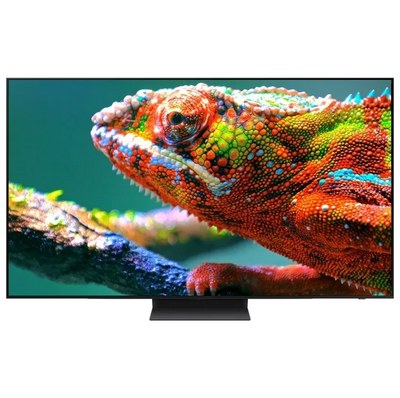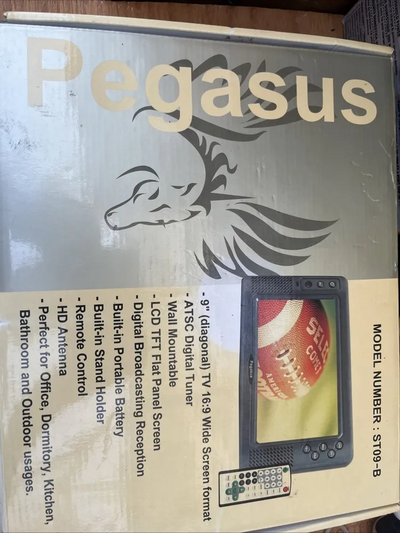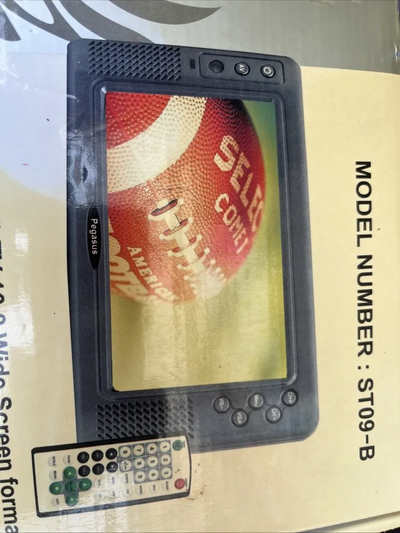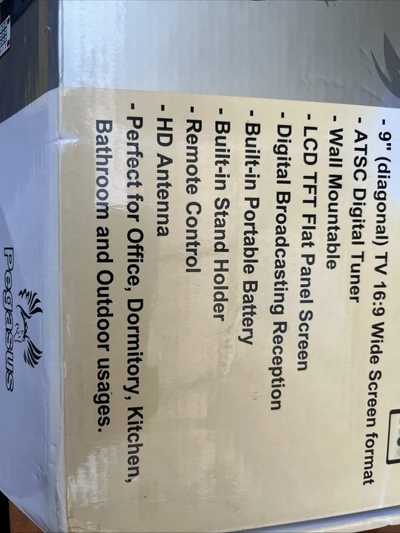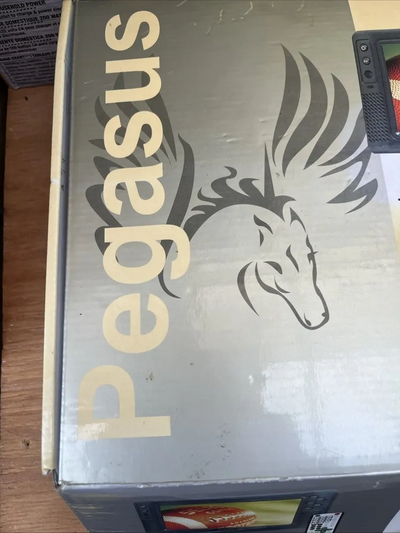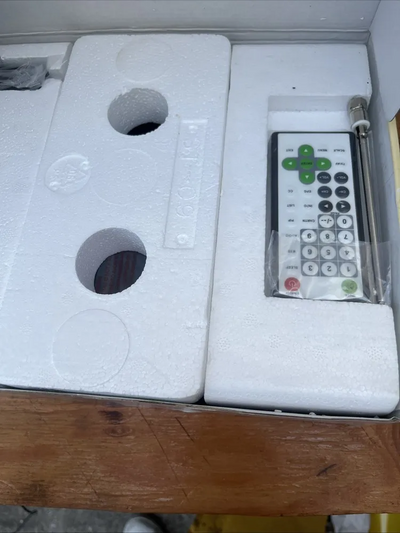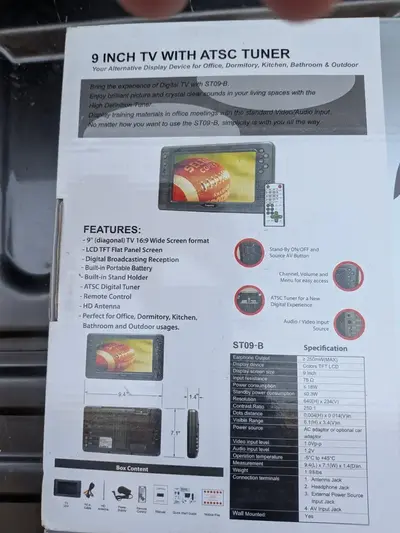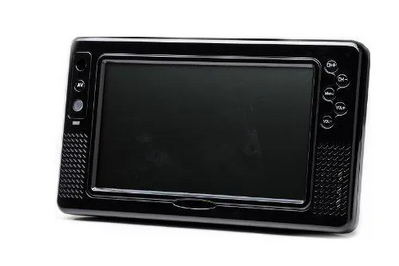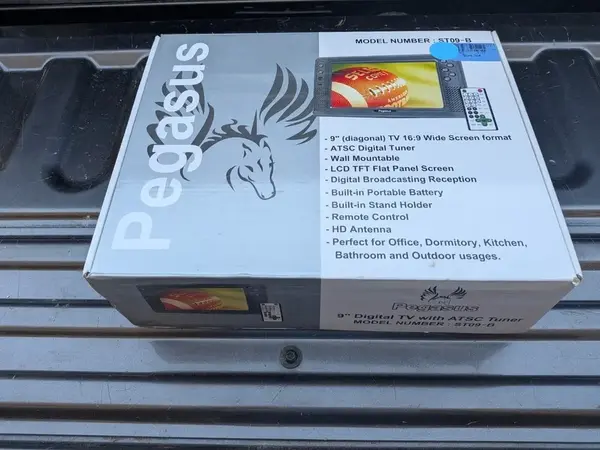
Pegasus STO9-B
| Brand | Pegasus 1998 |
| Model | ST09-B |
| Released Year | 1998 |
| Type | TV |
| Screen Size | Approximately 20 inches |
| Resolution | 480i standard definition |
| Display Technology | CRT (Cathode Ray Tube) |
| Built-in Digital Tuner | ATSC |
| Status | Discontinued |
Quick view
Overview
The Pegasus STO9-B is a CRT (Cathode Ray Tube) television designed primarily for standard definition broadcast reception. It features a traditional 4:3 aspect ratio with a display size typically around 20 inches. The television supports analog composite and RF inputs, allowing connectivity with VCRs and antenna sources. Built with a cathode ray tube, this model provides a resolution standard of 480i interlaced scanning. Controls are manual or via a basic IR remote, mostly including channel tuning and volume adjustment. The device operates on conventional AC power, featuring a robust design for durability.
Specifications
| MPN | ST09-B |
| UPC | 049696582582 |
| Model |
|
| Display Technology | CRT (Cathode Ray Tube) |
| Built-In Tuner | ATSC |
| TV Type | Portable |
| Definition | Sdtv |
| Exterior Color | Black |
| Screen Size | Approximately 20 inches |
| Aspect Ratio | 4:3 |
| Resolution | 480i standard definition |
| Inputs | Composite video, RF antenna |
| Power Supply | AC 110-240V, 50/60 Hz |
| Remote Control | Basic IR remote included |
| Color System | PAL/SECAM/NTSC (depending on region) |
| Speaker Output | Mono or stereo built-in speakers |
| Dimensions (W×H×D) | Approx. 48 x 42 x 45 cm |
| Weight | Approximately 15 kg |
| Built-in Digital Tuner | ATSC |
| Maximum Resolution | 640H |
| Color | Black |
Images
Key Advantages
The Pegasus STO9-B excelled in delivering clear and consistent picture quality for its time. With a simple interface and straightforward operation, it was user-friendly for a wide audience. Its CRT technology provided deep blacks and vibrant colors compared to early flat panels. The TV's durable build ensured longevity under typical household use. It accommodated multiple input sources making it versatile for various media devices. Additionally, the power consumption was moderate, reflecting typical energy usage of 1990s CRT TVs.
Limitations
Being an older CRT-based model, the STO9-B limited users to standard definition signals without support for modern high-definition formats. Its bulky form factor made it less space-efficient compared to contemporary flat-panel TVs. The screen resolution and refresh rate caused noticeable flicker and lower sharpness by today’s standards. There was no support for digital inputs like HDMI or USB, restricting compatibility with modern devices. The manual controls and lack of advanced settings limited customization and convenience. Finally, CRT technology posed challenges such as weight and potential for screen burn-in over time.
FAQ
What type of display technology does the Pegasus STO9-B use?
The Pegasus STO9-B uses cathode ray tube (CRT) technology for its display.
Does the STO9-B support high-definition content?
No, the STO9-B supports only standard definition analog signals.
What input options are available on the Pegasus STO9-B?
It typically includes analog composite inputs and an RF antenna input.
Is the Pegasus STO9-B still manufactured or available new?
No, the model has been discontinued and is no longer manufactured.
Can modern devices like DVD players be connected to this TV?
Yes, through the composite video input, DVD players and similar devices can be connected.
What is the typical screen size of the Pegasus STO9-B?
The screen size is generally around 20 inches diagonal.
Does the STO9-B have a remote control?
Yes, it usually came with a basic infrared remote for channel and volume control.
Disclaimer
The content on is provided for general informational purposes only. We do not guarantee the accuracy, completeness, or reliability of any information, specifications, or visuals presented on the site.
is not responsible for any content, images, or data uploaded or shared by users. Users are solely responsible for the content they submit.
We may include links to third-party websites for convenience. We do not endorse or take responsibility for the content or policies of any external sites.
Use of the site is at your own risk. Always verify critical information independently before making decisions based on content from this website.

